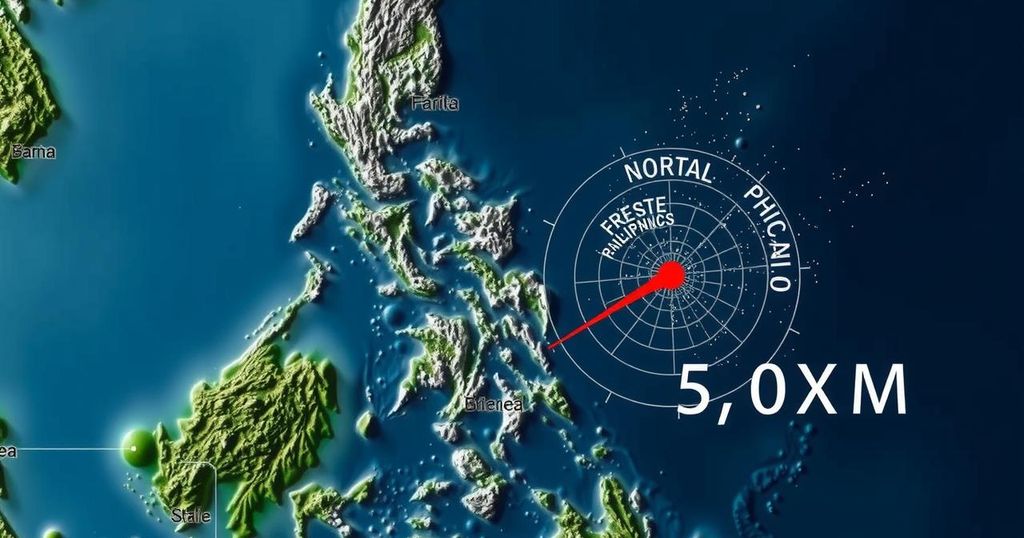Magnitude 5.6 Earthquake Hits Northern Philippines, Authorities Assess Impact
A magnitude 5.6 earthquake hit northern Philippines on December 4. The quake, centered in Bangui, Ilocos province, occurred at a depth of 37 km. Local officials are assessing potential damage, though no significant reports have emerged. Authorities warn of aftershocks, and the Philippines’ location on the Pacific Ring of Fire makes it susceptible to earthquakes.
On December 4, a seismic event registering a magnitude of 5.6 occurred in the northern region of the Philippines, as reported by the German Research Centre for Geosciences (GFZ). The earthquake was situated at a depth of 37 kilometers and was centered in the town of Bangui within Ilocos province. Authorities, including the Philippine Institute of Volcanology and Seismology (PHIVOLCS), have issued alerts regarding possible aftershocks and potential damage ensuing from the tremor. Although initial reports indicated no significant damage, local disaster officer Fidel Cimatu remarked on the intensity, stating, “It wasn’t that strong. But the shaking lasted a bit long.” Recovery efforts are underway, as local authorities assess the situation across affected communities. Given the Philippines’ location on the Pacific ‘Ring of Fire,’ such seismic events are frequent in this region.
The Philippines is geographically situated along the Pacific Ring of Fire, which encompasses a vast area known for its high seismic activity and frequent earthquakes. This area is characterized by numerous volcanoes and tectonic plate interactions that contribute to the region’s instability. Earthquakes in the Philippines are common, and local agencies are routinely prepared for such events. They are equipped to manage the immediate aftermath, including assessing potential damages and providing responsive measures to safeguard affected populations.
In conclusion, the recent 5.6 magnitude earthquake that struck the northern Philippines serves as a reminder of the country’s ongoing vulnerability to seismic activity due to its geographical location. While authorities continue to monitor the situation and assess for damages and aftershocks, it is crucial that preparedness and response plans remain robust to mitigate the impact of such natural events in the future.
Original Source: www.straitstimes.com




Post Comment